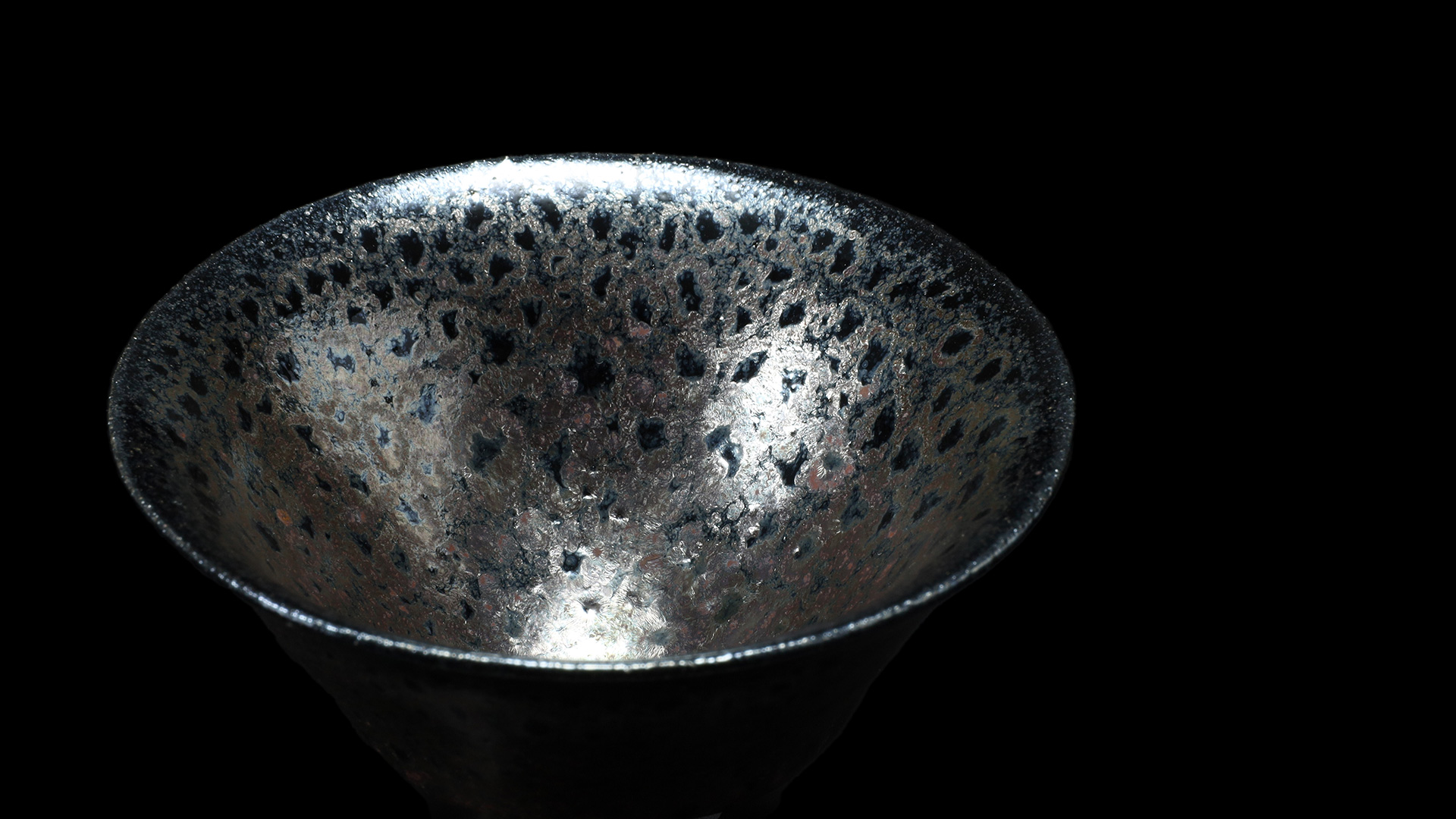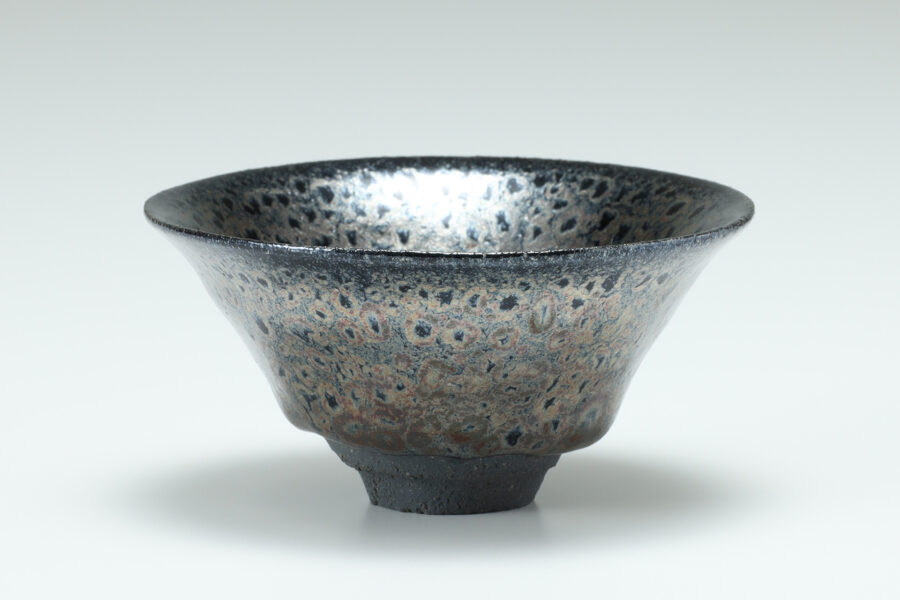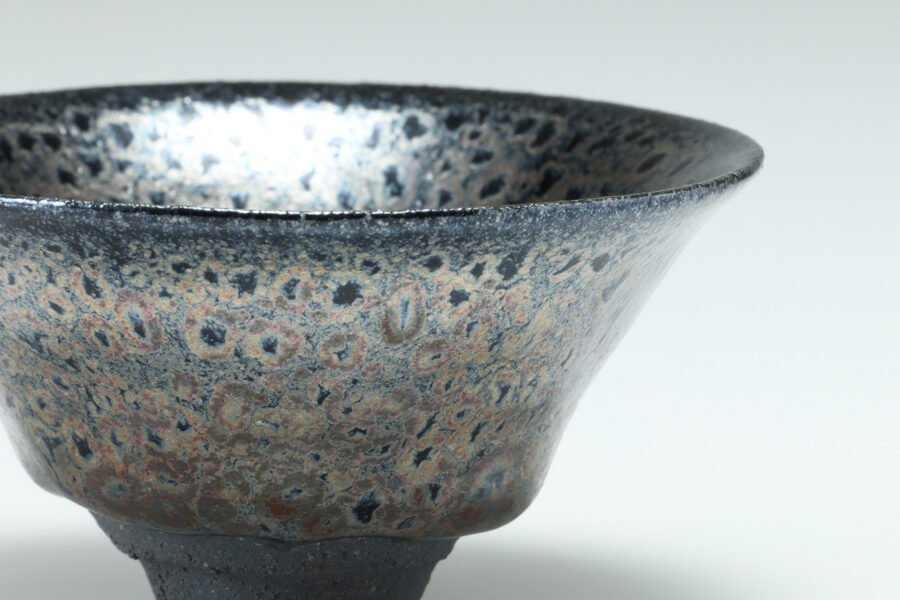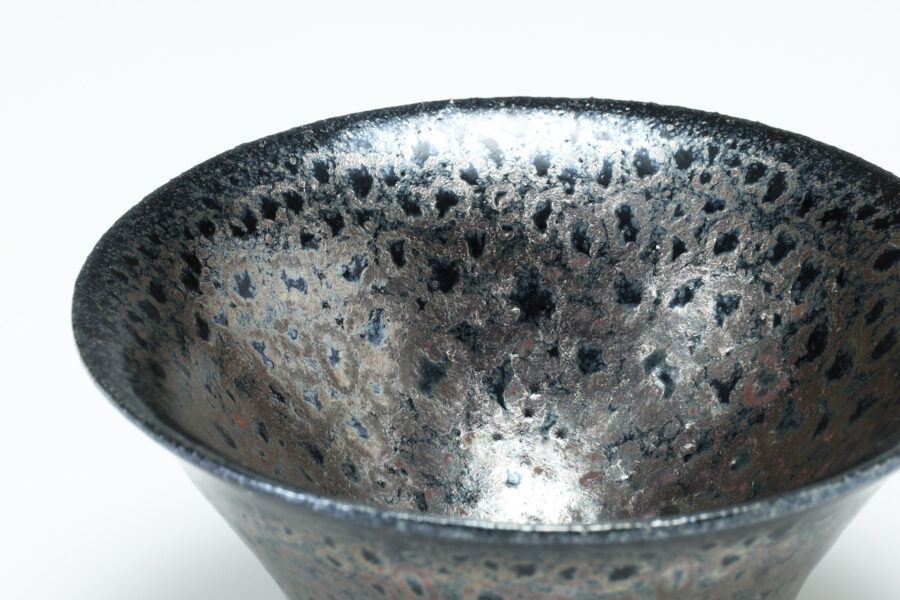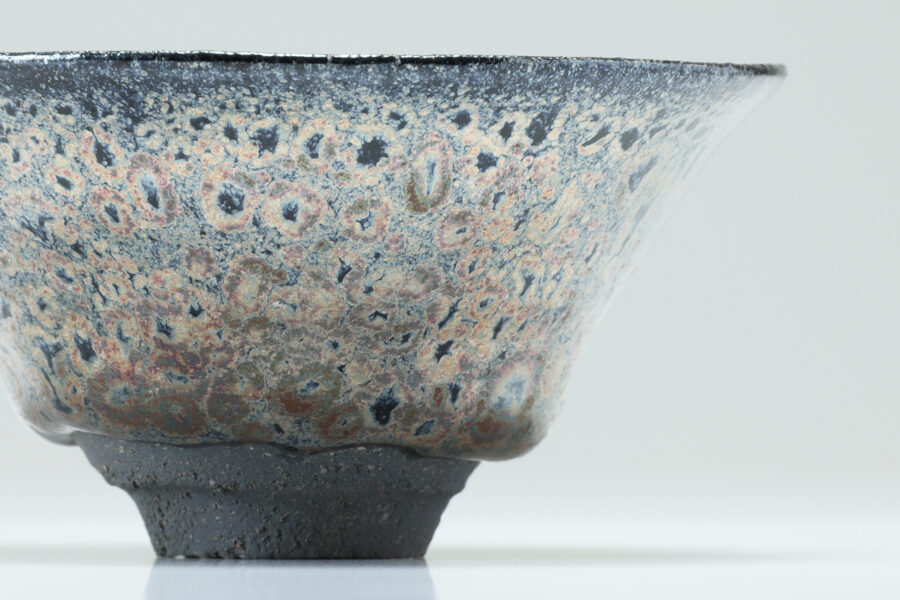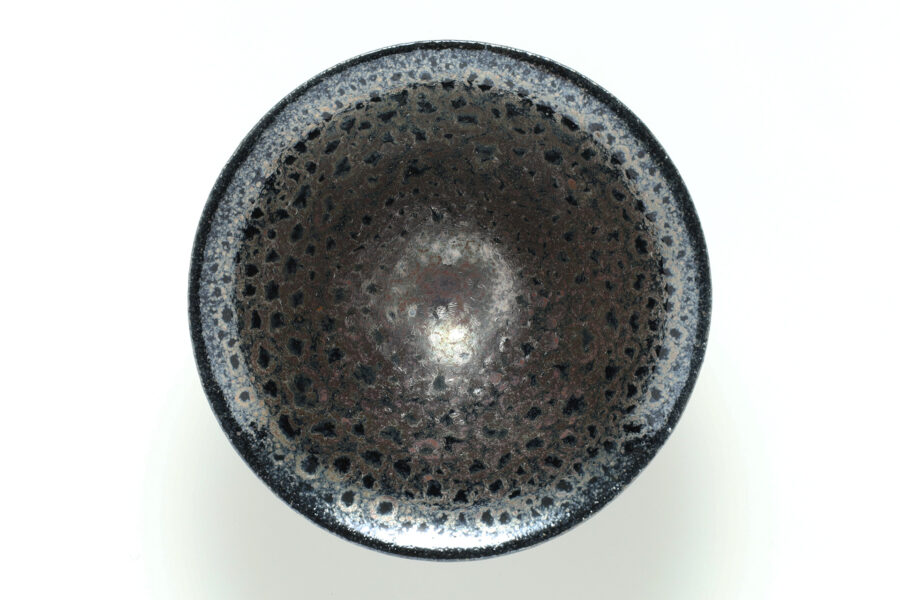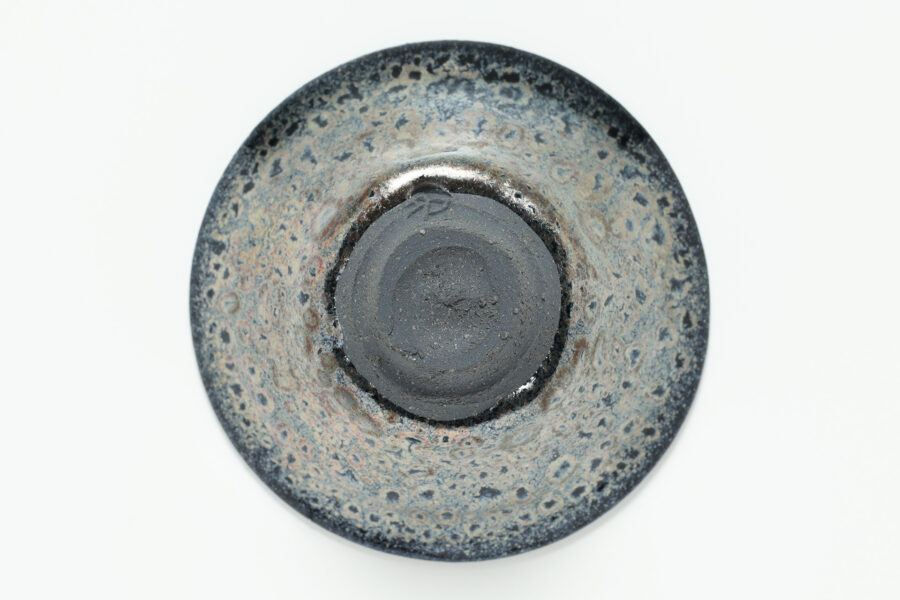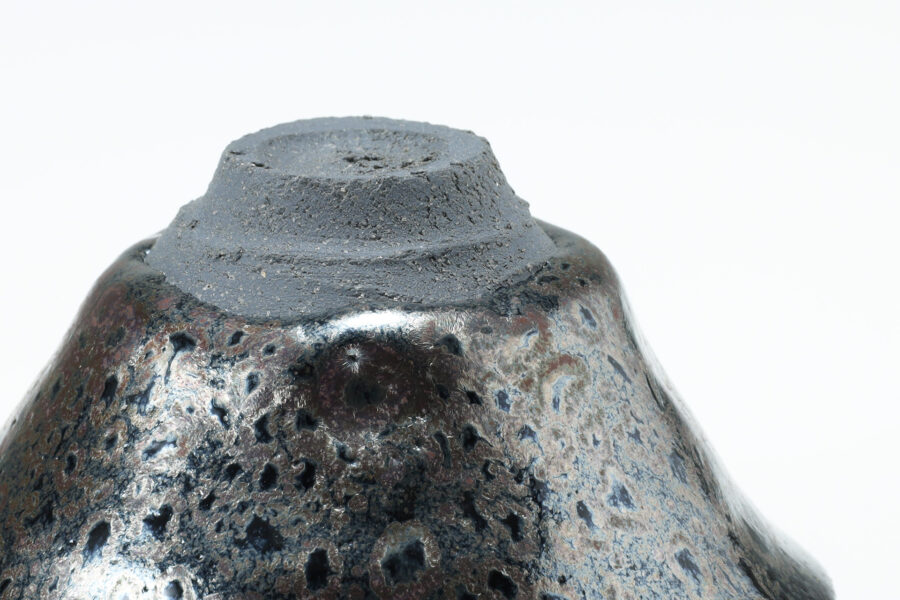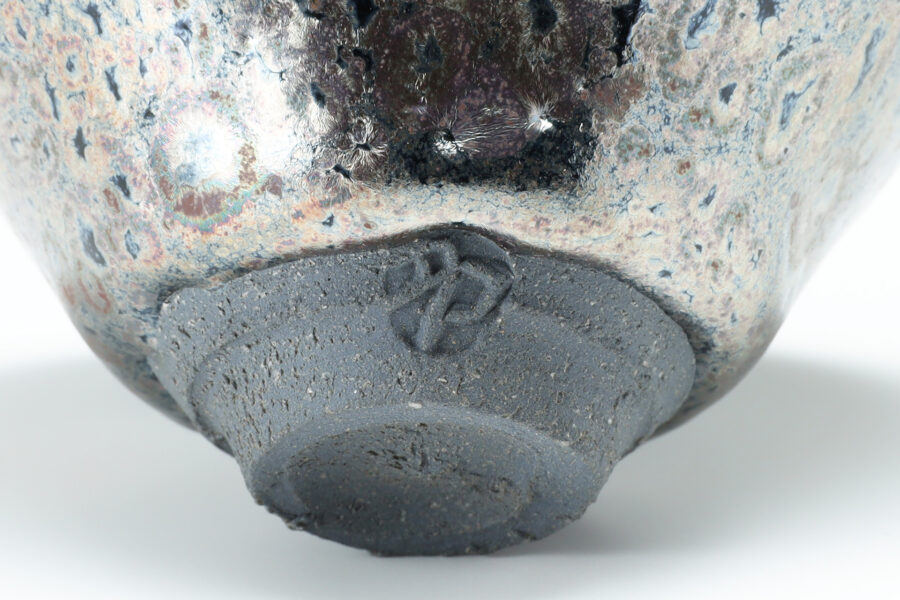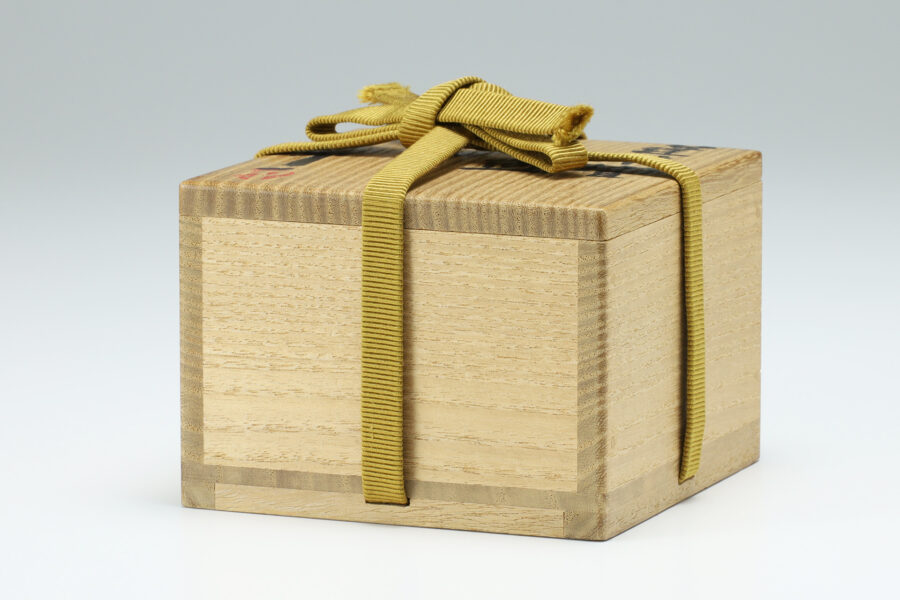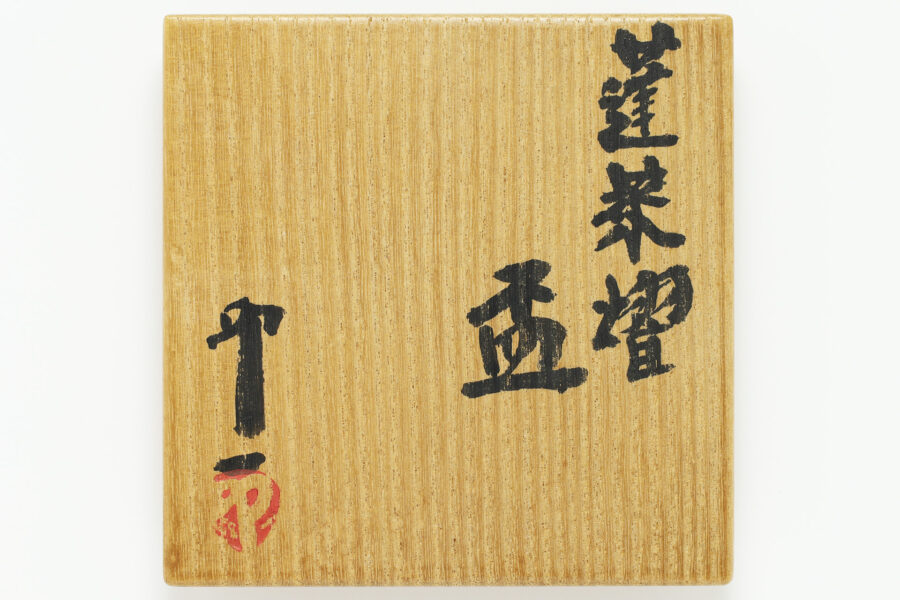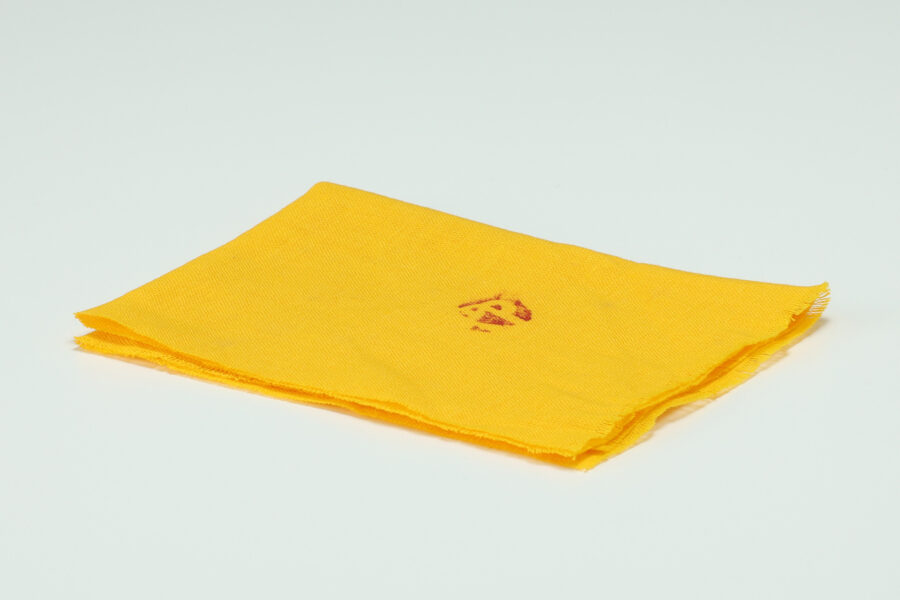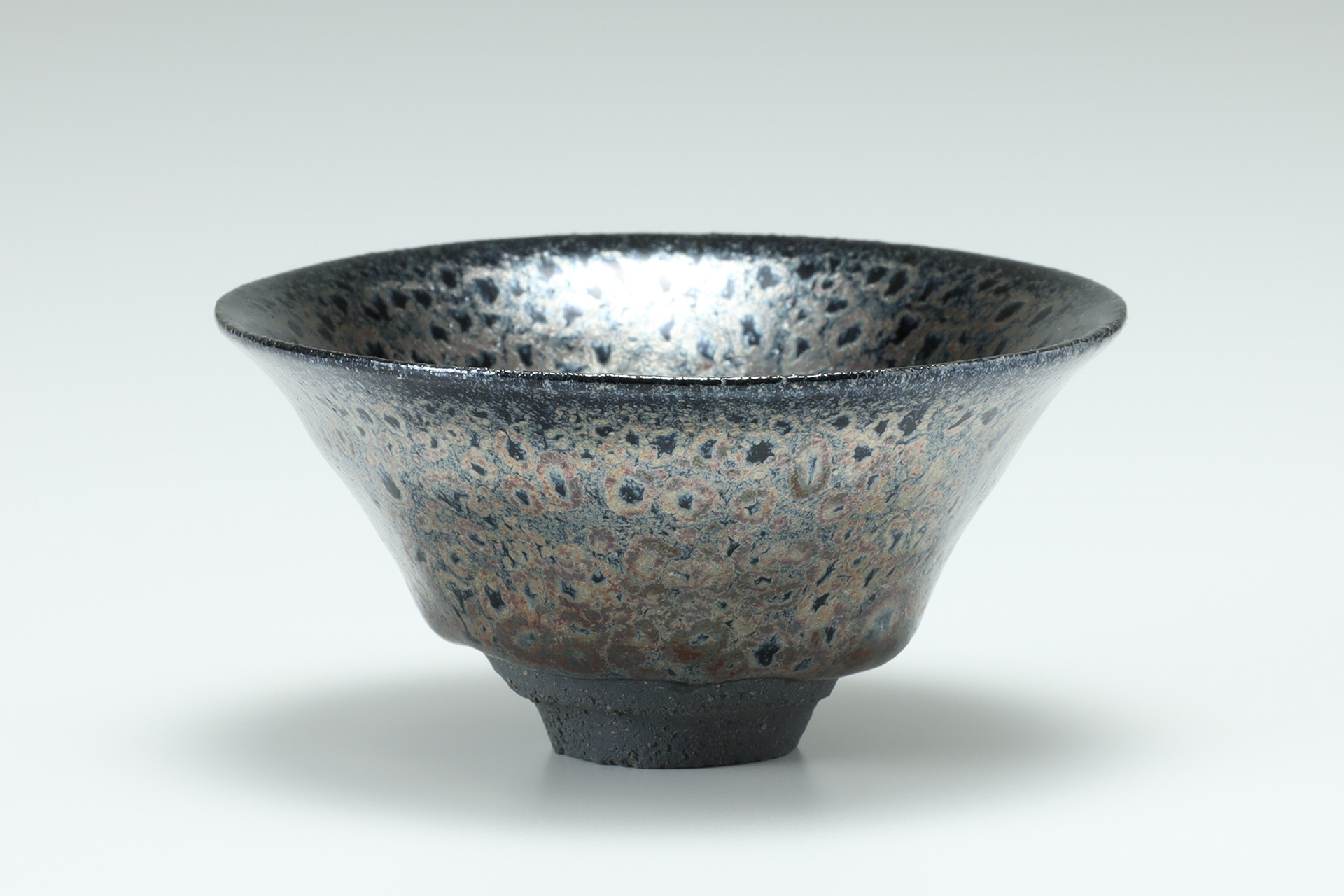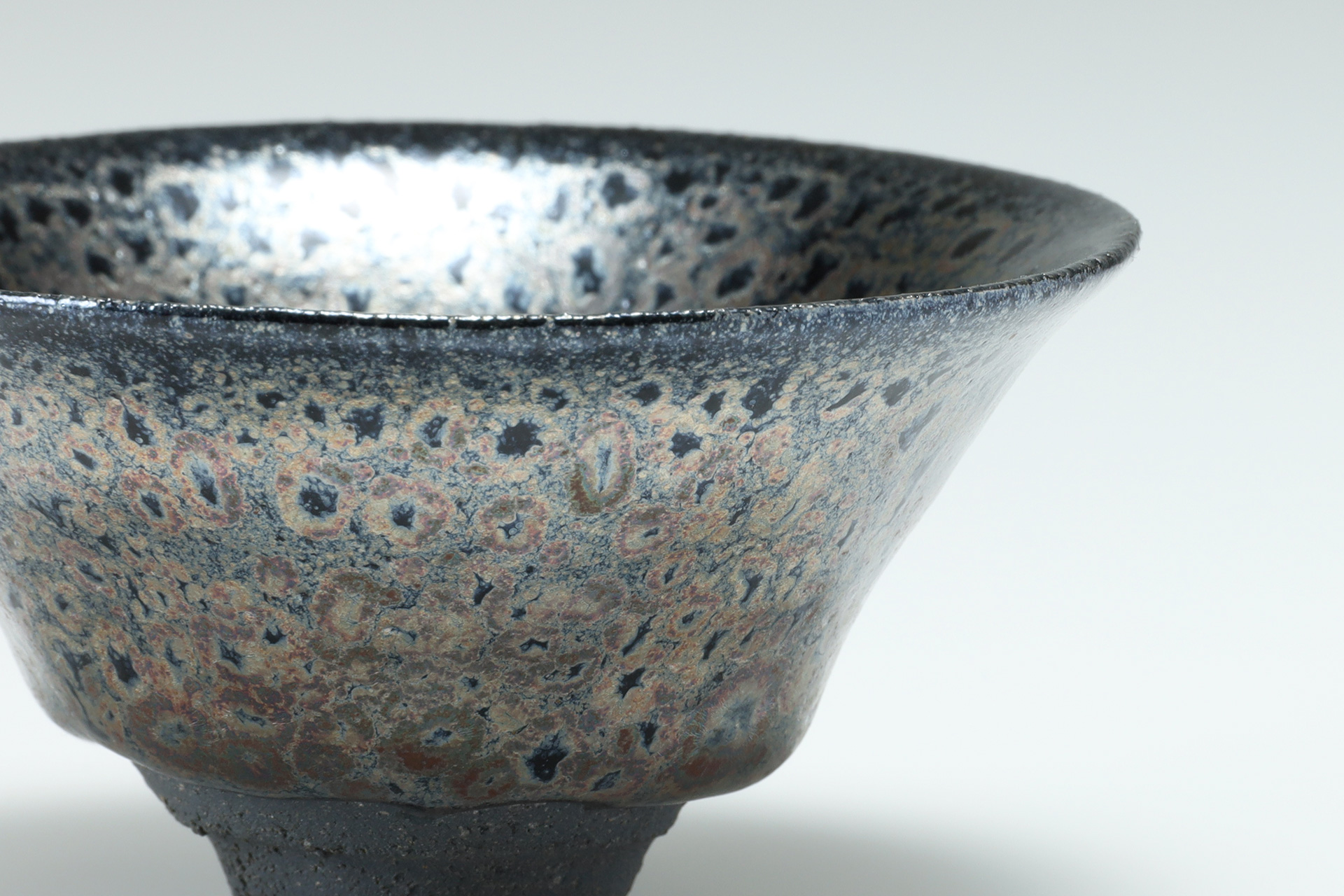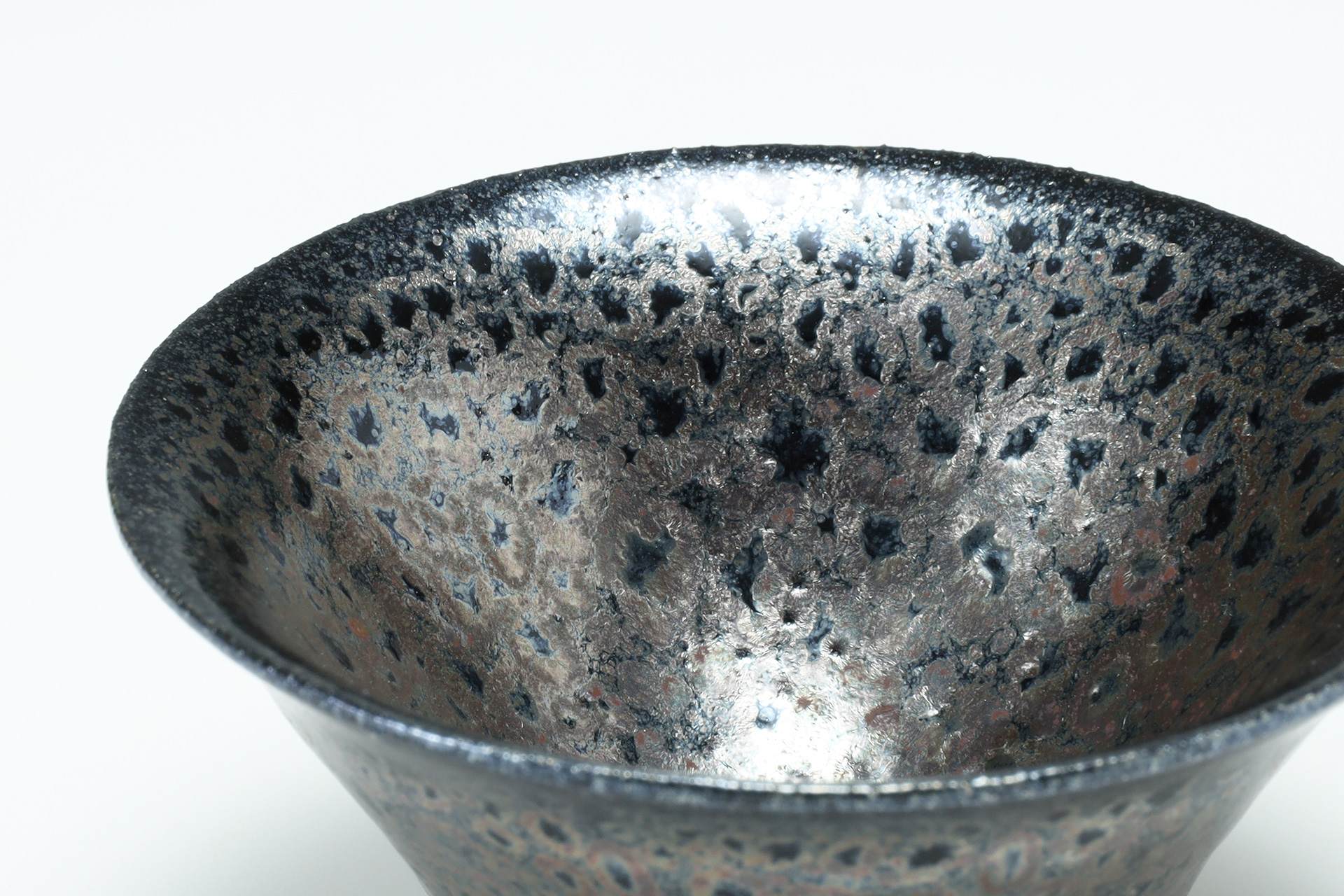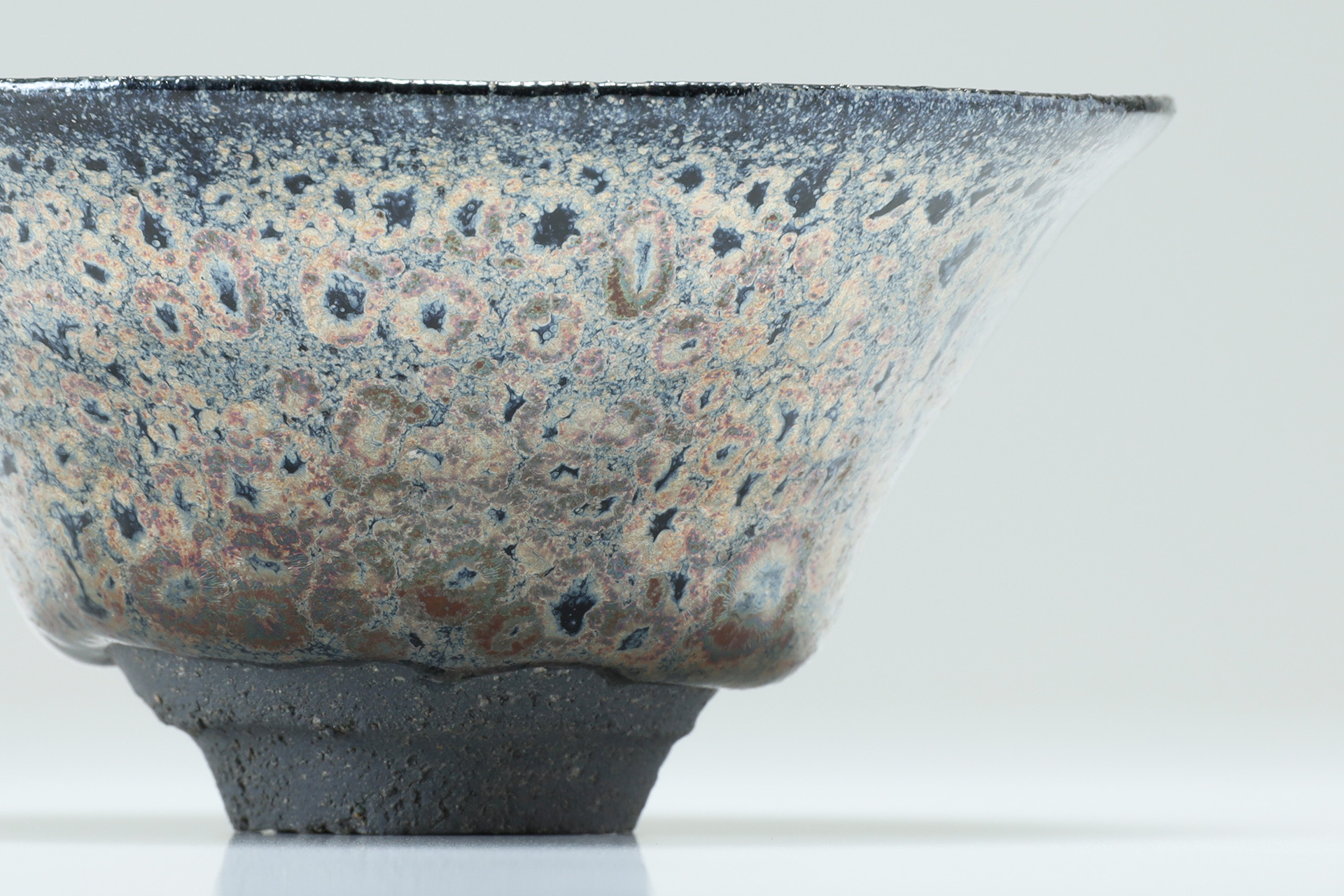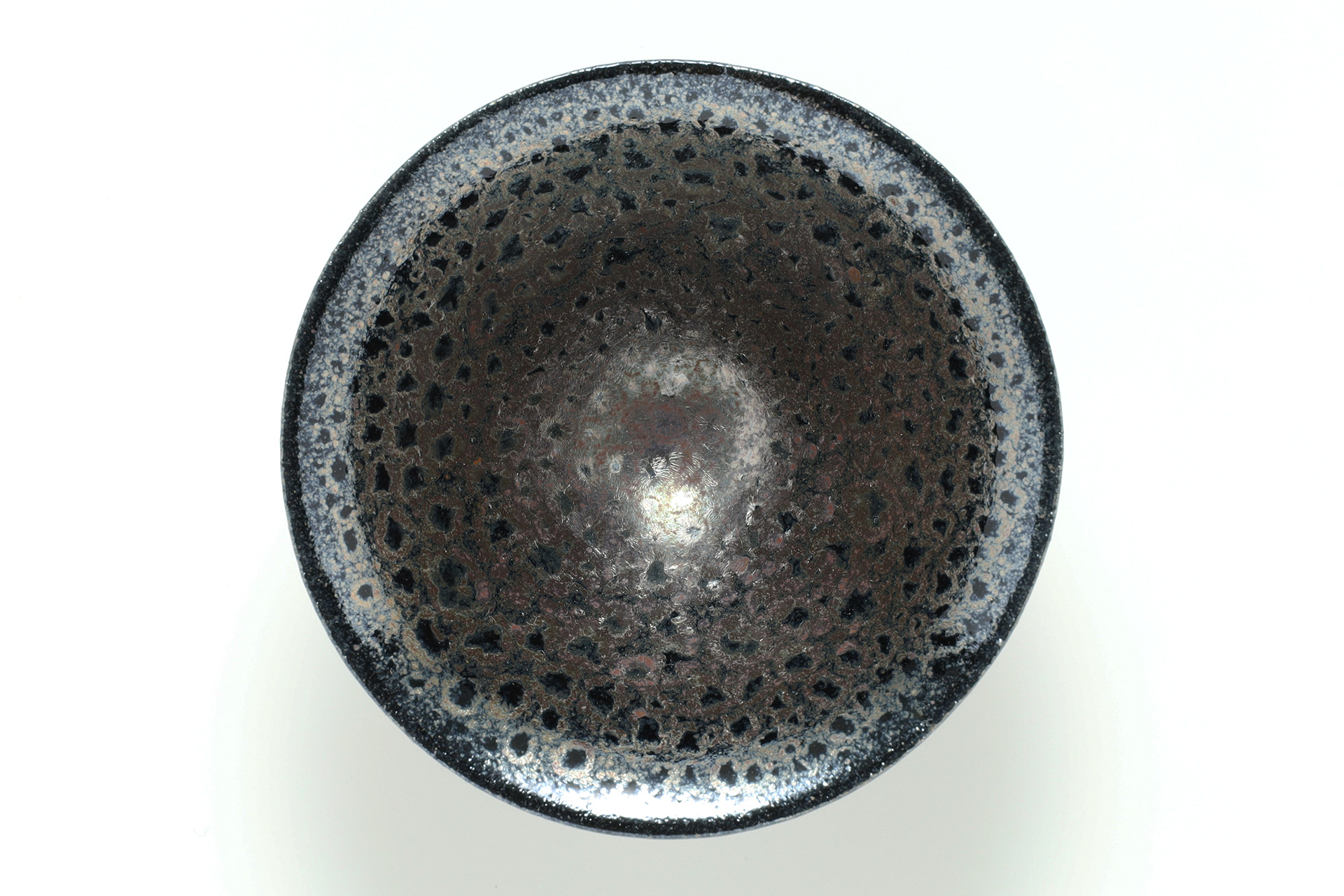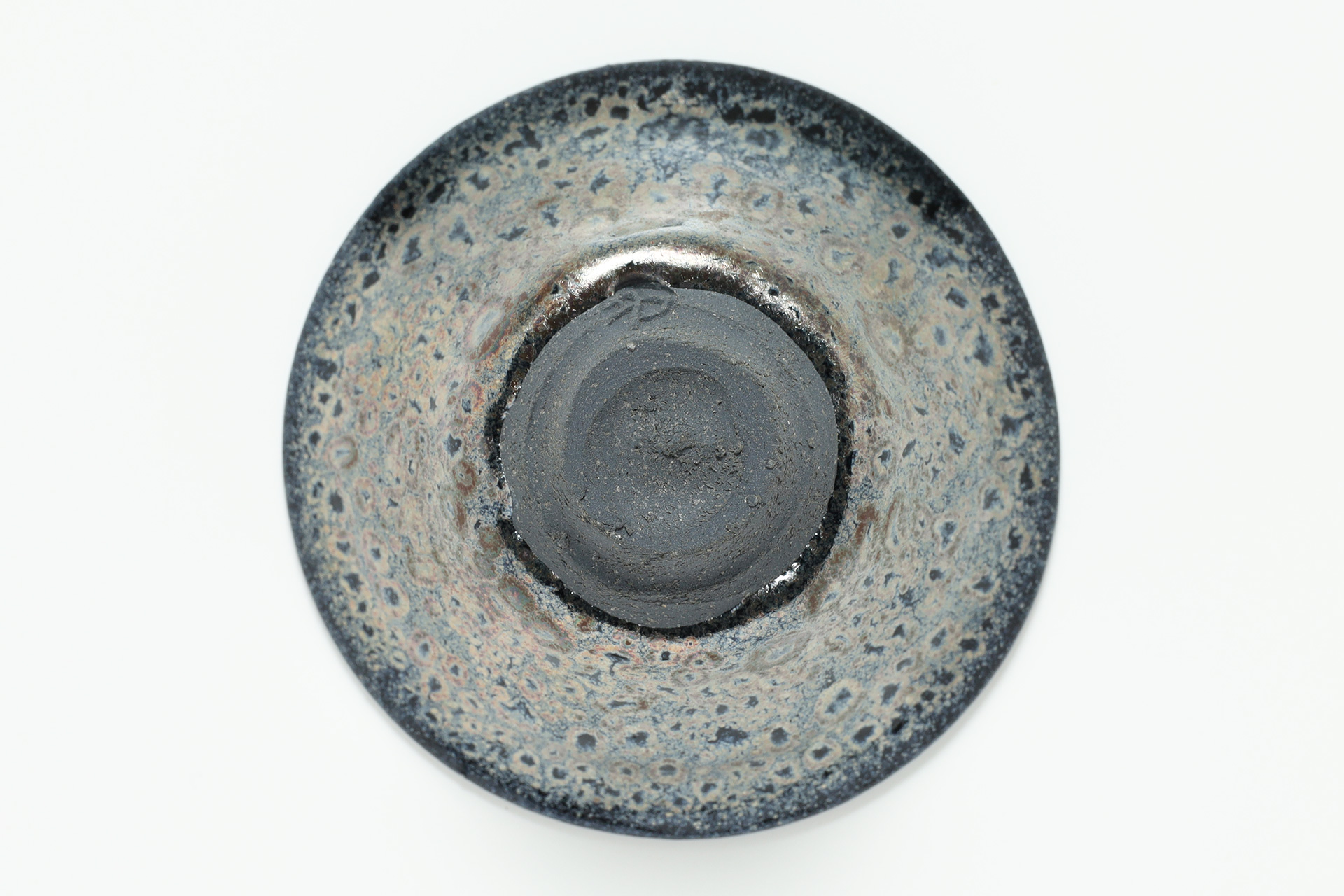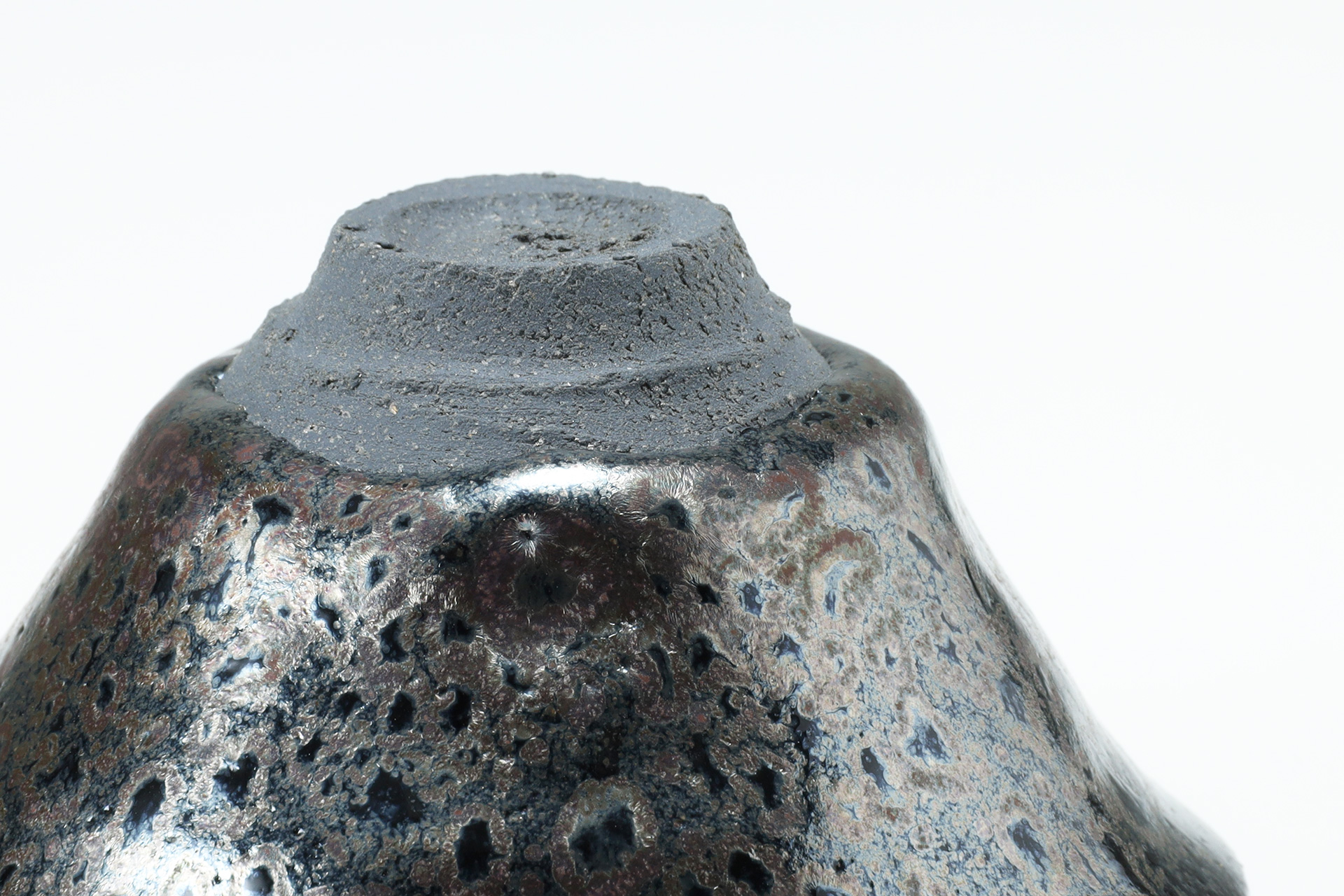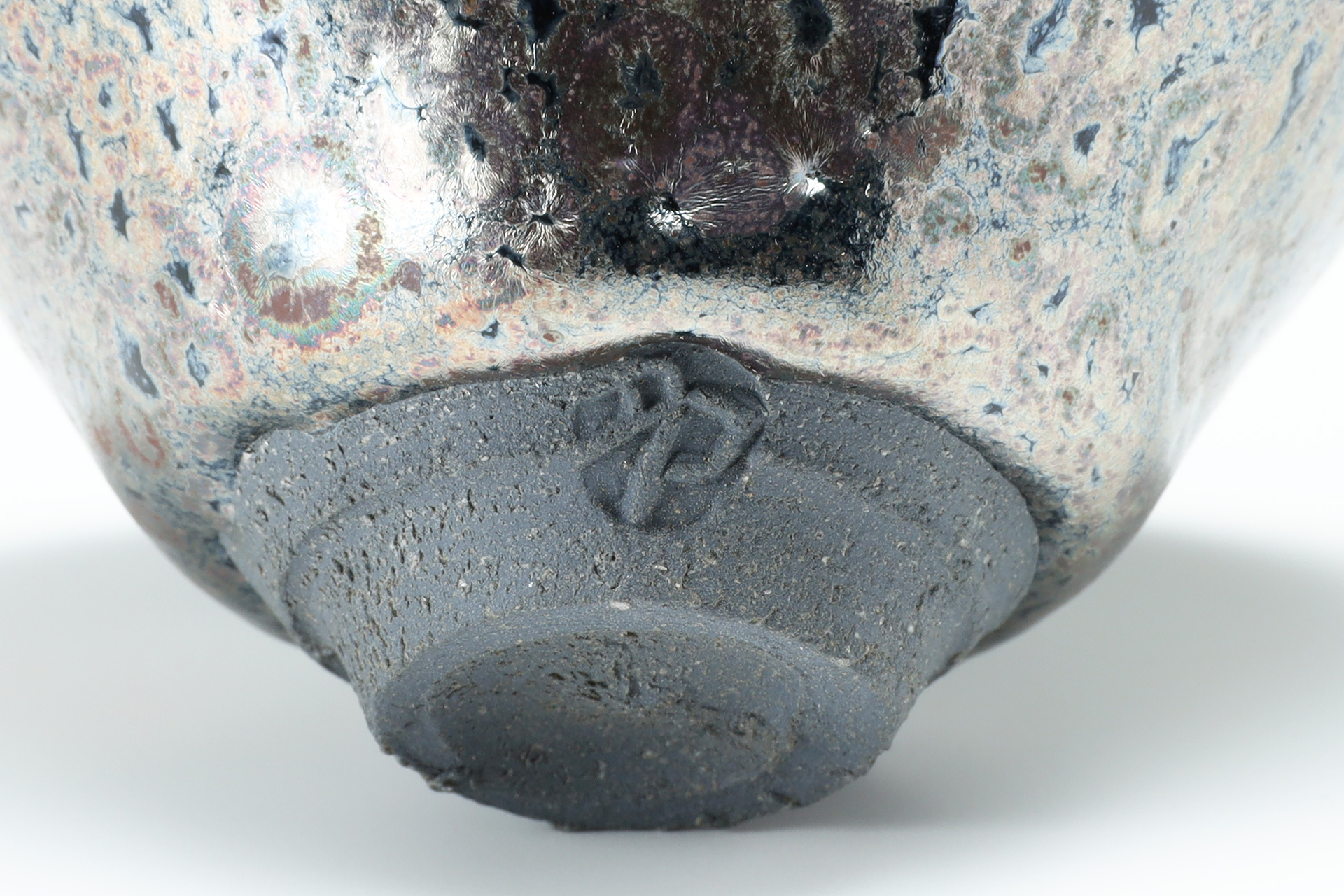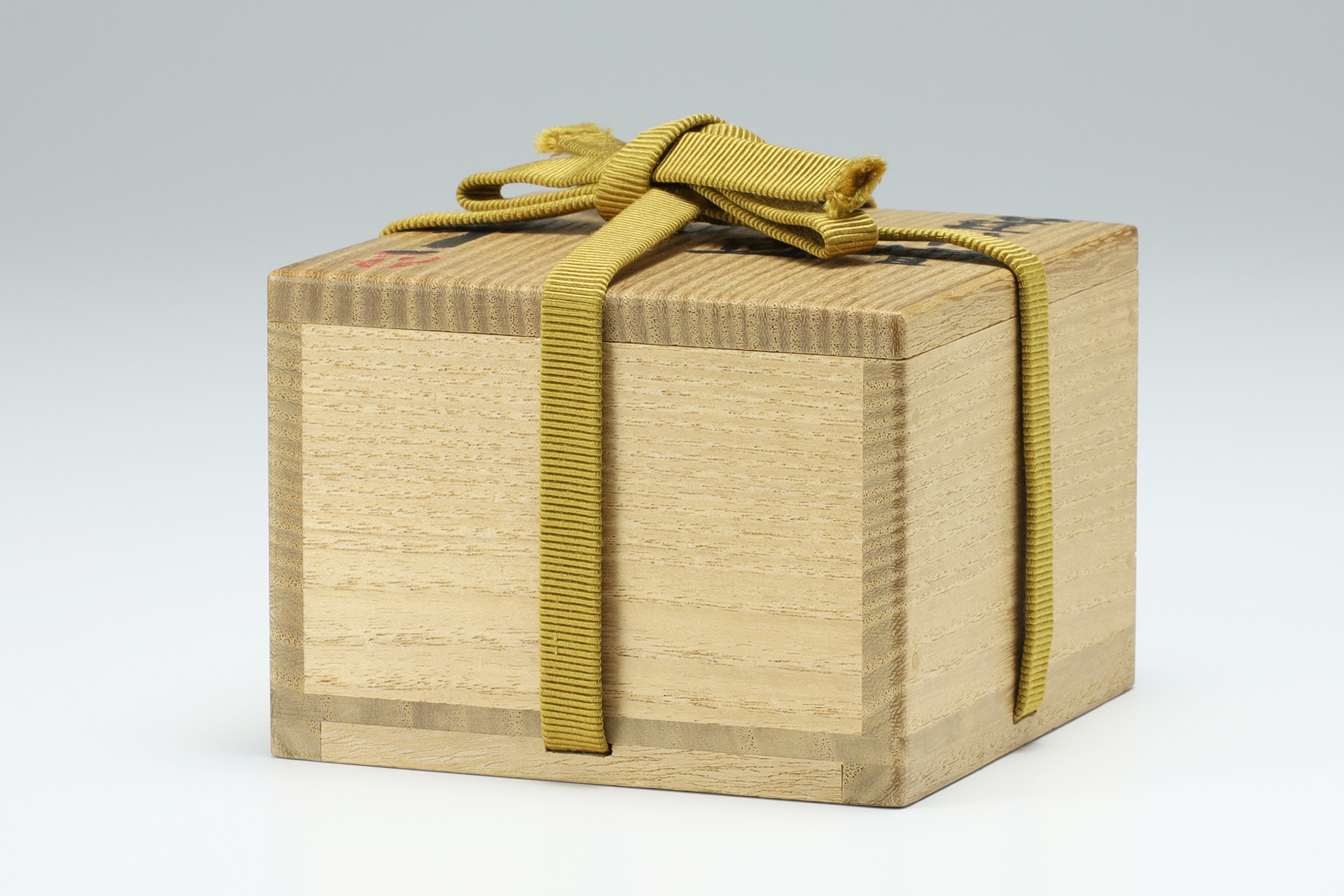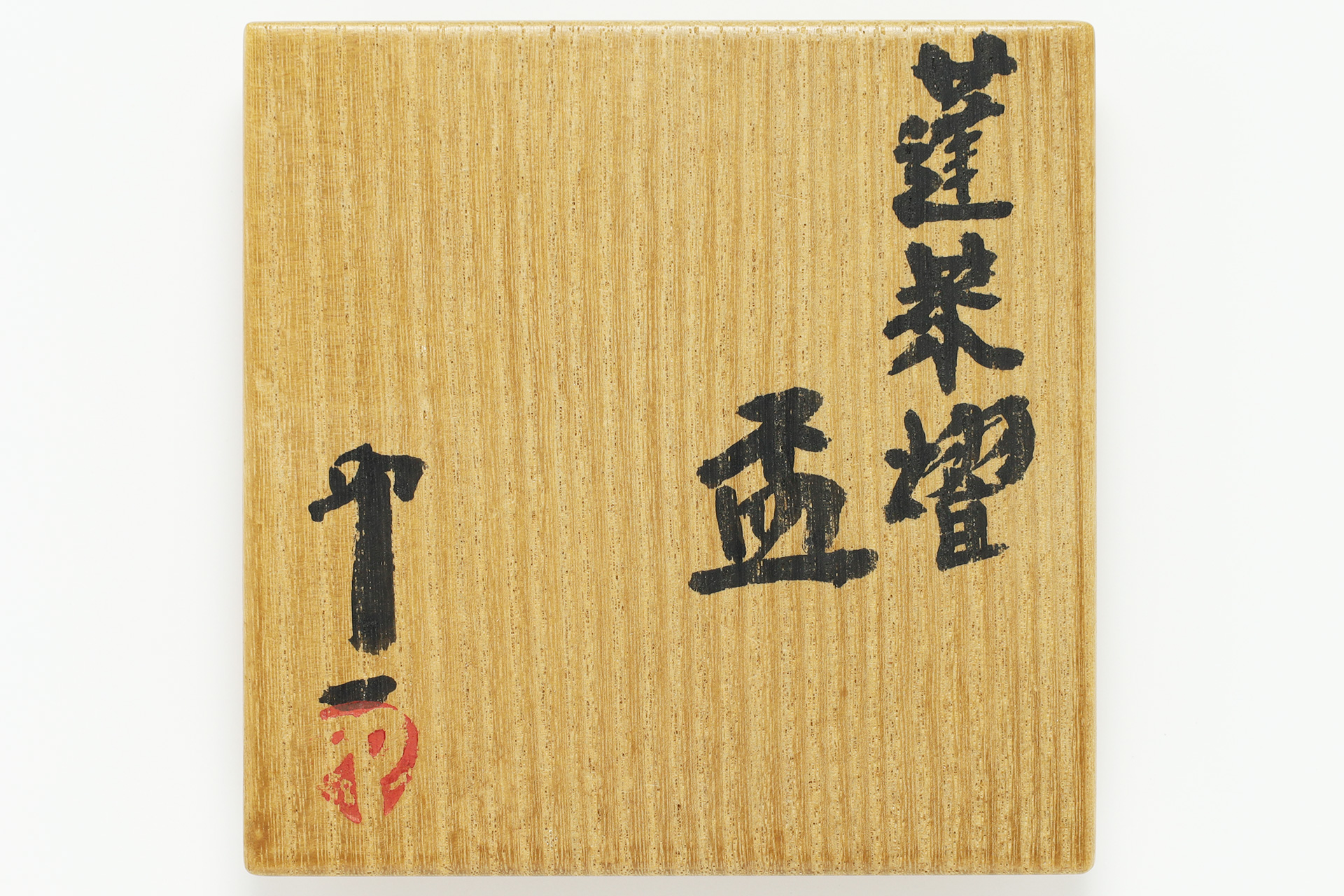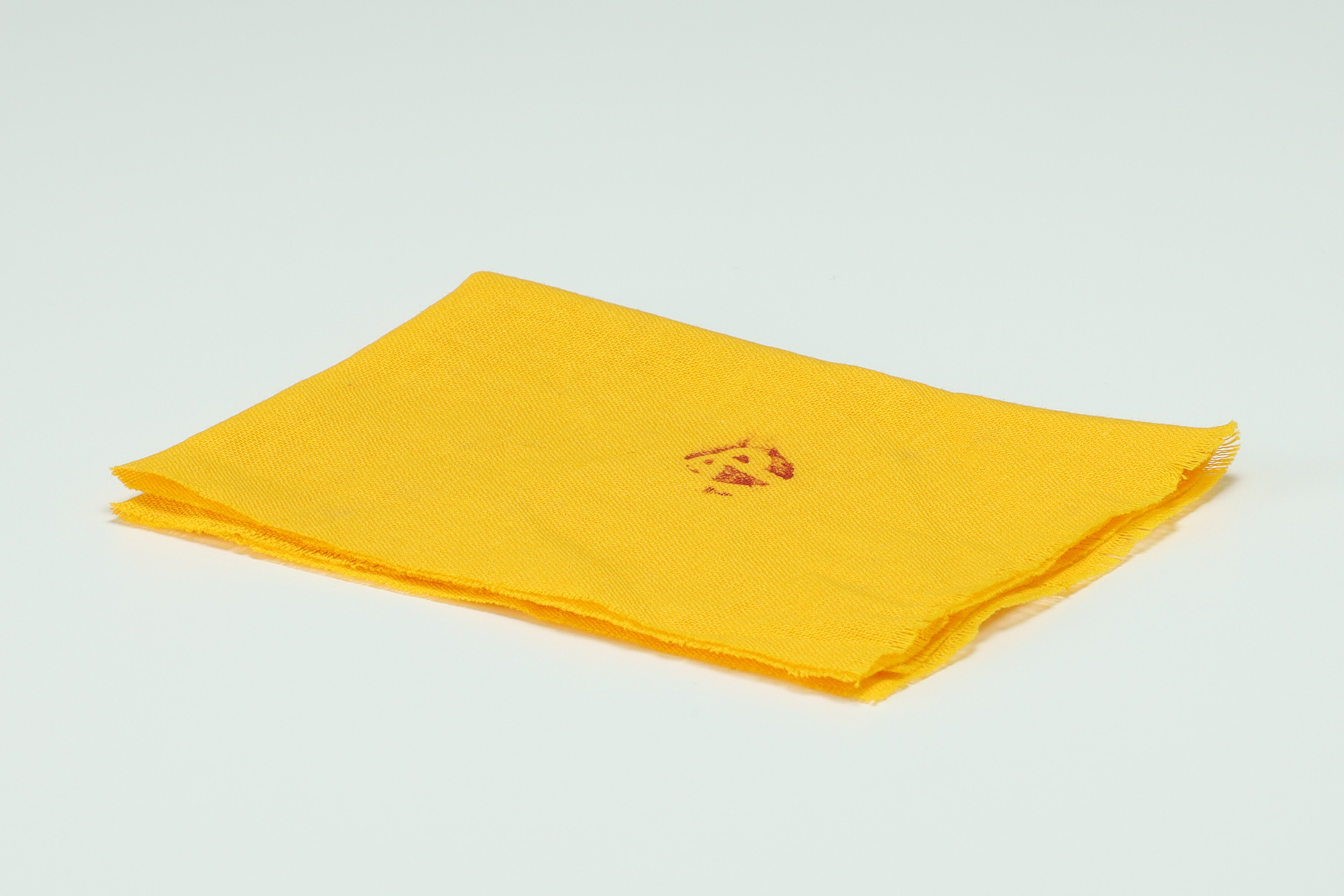It is the elegant and fantastic sake cup with a silver sparkle like stars in the sky. The glossy black glaze is abundantly applied to the sharp form that seems to cut when touched, and you can faintly see the iris inside.
Inquiry
- Product Code
- 230301-1
- Artist
- Uichi Shimizu
1926-2004
Living National Treasure
- Weight
- 71g
- Diameter
- 8.0cm
- Height
- 3.9cm
- Bottom Diameter
- 2.1cm
- Description
- Paulownia Box with Artist's Sign
Cloth with Artist's Sign
- Condition
- Excellent Condition
It is in good condition without a feeling of use.
Uichi Shimizu 1926-2004
Uichi Shimizu was born in Kyoto City as the eldest son of Unosuke Shimizu.
In 1940, dropped out of Ritsumeikan Commercial School and studied under Munemaro Ishiguro. Although it was only for a short period of time, deeply influenced by his spirituality and opened my eyes to the neat classical beauty of chinese song dynasty porcelain. Later, after working as a trainee at the Kyoto National Ceramics Research Institute, worked at the Ceramics Department of the Kyoto Municipal Industrial Research Institute.
In 1945, opened a kiln in Gojozaka, Kyoto, and distinguished himself as a potter.
In 1948, formed the ” Shikokai “.
In 1949, formed the “Ryokutokai”.
In 1950, received the Mayor’s Prize at the Kyoto City Art Exhibition. Received the Grand Prize at the Kyoto Ceramic Artist Club New Ceramics Exhibition.
In 1951, received the Highest Award at the Kyoto Prefectural Arts and Crafts Exhibition.
In 1953, received the Encouragement Award at the Contemporary Crafts Association Exhibition.
In 1954, received the Club Award at the Kyoto Potter Club Exhibition.
In 1955, received the Japan Ceramic Society Award. Mainly made pottery with iron glaze.
In 1958, inaugurated as the Regular Members of the Japan Kogei Association. Received the Encouragement Award at the Japan Traditional Art Crafts Exhibition.
In 1959, received the Grand Prix at the Brussels World Exposition.
In 1960, received the Japan Kogei Association President’s Award at the Japan Traditional Art Crafts Exhibition.
In 1961, the Tenmoku Jar was purchased for the Fukiage Palace of the Imperial Palace.
In 1962, received the Gold Medal at the Prague International Ceramic Art Exhibition.
Received the Asahi Shimbun Award at the Japan Traditional Art Crafts Exhibition.
In 1963, inaugurated as the Audit Committee of the Traditional Japan Craft Exhibition. Received the Silver Medal at the Washington International Ceramics Exhibition.
In 1964, inaugurated as the Director of the Japan Kogei Association.
In 1967, received the Grand Prix at the Istanbul International Ceramic Art Exhibition.
In 1969, made the Iron Glaze Jar for the Imperial Palace New Palace.
In 1970, received the Honorary Participation Award at the Vallauris International Ceramics Biennale. Moved from Kyoto to open a kiln at the foot of Mt. Horai in Shiga Prefecture. The works using raw materials from the foot of Mt. Horai are named after Horai, such as the white porcelain “Horai Porcelain”, the iron glaze “Horaiyo”, and the yellow glaze “KiHorai”.
In 1973, received the 20th Anniversary Special Award at the Japan Traditional Art Crafts Exhibition.
In 1977, received the Japan Ceramic Society Gold Award.
In 1985, certified as the Human National Treasure in Iron glaze ware.
In 1986, when the Crown Prince and Princess of England visited Japan, a special demonstration was held at the Kyoto City Traditional Crafts Center, and Horaiyo tea bowl were presented at the request of the Ministry of Foreign Affairs. Received the Medal with Purple Ribbon.
In 1987, elected as the Chairman of the Ceramic Art Section of the Japan Kogei Association. In addition to contrasting black and white, presented works such as “Tetsuyo Hakuryu,” in which letters and lines were scraped off with fingers.
In 1988, received the Kyoto Prefecture Cultural Achievement Award.
In 1992, received the award as the Kyoto City Person of Cultural Merit.
In 1995, received the Medal with Dark Blue Ribbon.
In 1998, received the Kyoto Prefecture Cultural Award Special Achievement Award. Received the Order of the Rising Sun, Gold Rays with Rosette.
Based on the iron glaze pottery of the song dynasty in China, elegant and vivid works, which add a modern sensibility, have a sense of boldness even in a simple style, and have received extremely high praise.



